Introduction to Genetic Insights in Assisted Reproduction
Advances in reproductive medicine have dramatically improved the prospects for individuals and couples facing infertility. Among these innovations, preimplantation genetic testing (PGT) stands out as a vital tool for enhancing embryo selection during in vitro fertilization (IVF). Of particular interest is the phenomenon of mosaic embryos—embryos containing both normal and abnormal chromosomal cells—and their implications in fertility treatments. This article explores the nature of mosaic embryos identified through PGT-A, the clinical challenges they pose, and considerations for patients and clinicians navigating this evolving landscape.
Overview of Assisted Reproductive Treatments and Their Role in Conception
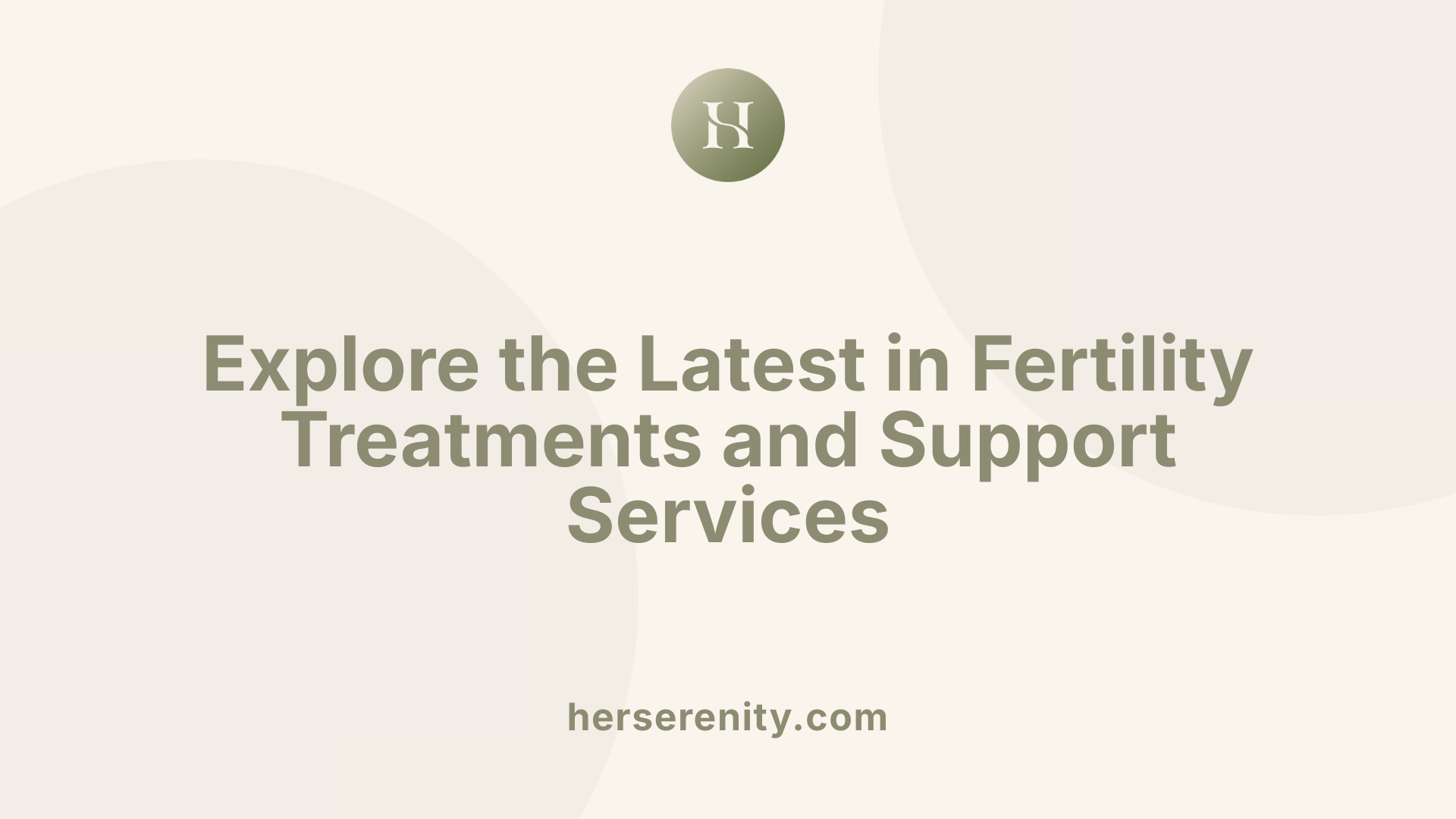
What medical treatments and services are commonly available to assist individuals and couples with conception and reproductive health?
Individuals and couples facing fertility challenges have access to a variety of medical treatments and services designed to aid conception and support reproductive health. These include fertility evaluations to diagnose underlying causes of infertility, ovulation induction therapies to stimulate egg release, and intrauterine insemination (IUI), a procedure where sperm is directly placed into the uterus around the time of ovulation.
In vitro fertilization (IVF) stands as one of the most advanced and commonly used treatments. IVF involves retrieving eggs from the ovaries and fertilizing them with sperm in a laboratory environment before transferring the resulting embryos into the uterus. This technique has evolved with innovations such as preimplantation genetic testing (PGT), which screens embryos for genetic abnormalities, improving success rates and reducing miscarriage risk.
Additional options include the use of donor eggs or sperm, surgical interventions correcting anatomical issues like tubal blockages or endometriosis, and addressing male factor infertility through specialized sperm treatments. Importantly, counseling services play a crucial role, providing emotional support and guidance throughout these often complex processes.
Professional organizations like the American Society for Reproductive Medicine (ASRM) offer extensive resources, including clinical guidelines, research updates, and patient education through platforms like ReproductiveFacts.org. These resources assist patients and practitioners in making informed decisions and accessing state-of-the-art care tailored to individual needs.
Common Causes of Infertility Addressed by Medical Treatments
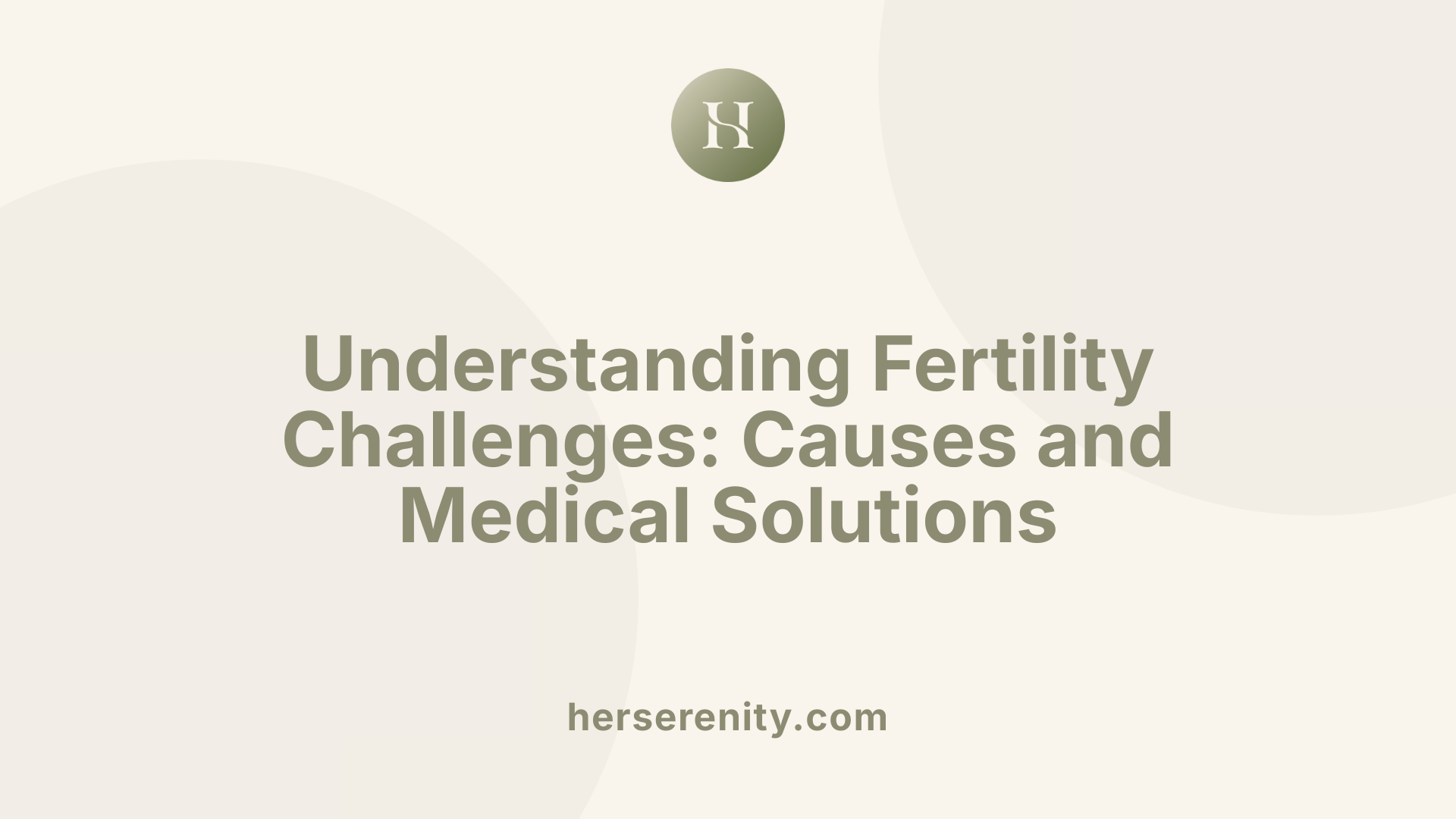
What are the main causes of infertility that medical treatments aim to address?
Medical treatments for infertility focus on a variety of underlying causes that disrupt conception. The primary targets include hormonal imbalances, ovulation disorders, structural abnormalities, and male factor issues.
Hormonal and Ovulation Disorders
Conditions such as polycystic ovary syndrome (PCOS) and hypothalamic amenorrhea lead to irregular or absent ovulation, which are common targets for medical therapy. Treatments often involve medications that stimulate ovulation, including clomiphene citrate or gonadotropins, aiming to restore regular egg release.
Structural Factors
Blocked fallopian tubes, uterine fibroids, endometriosis, and pelvic adhesions can impair the egg’s journey or implantation of the embryo. Surgical interventions may be used to remove fibroids, clear tubal obstructions, or reduce adhesions, improving fertility prospects.
Male Factor Infertility
Low sperm count, poor sperm motility, or physical blockages in the reproductive tract are significant contributors to infertility. Medical treatments range from hormonal therapy to improve sperm parameters, to assisted reproductive technologies like intracytoplasmic sperm injection (ICSI), which can bypass many male-related barriers.
Assisted Reproductive Technologies (ART)
When medical or surgical treatments are insufficient, techniques such as in vitro fertilization (IVF) and intrauterine insemination (IUI) are employed. These strategies help overcome both male and female infertility factors by facilitating fertilization and embryo development in controlled environments.
Managing Age-Related Factors
As women age, egg quality declines, which may limit response to standard treatments. Donor egg programs can be considered to circumvent age-related infertility when appropriate.
Through targeted medical treatments addressing these causes—hormonal disruption, structural abnormalities, male reproductive issues, and age-related decline—clinicians improve the chance of successful conception and pregnancy.
In Vitro Fertilization (IVF): Process and Indications
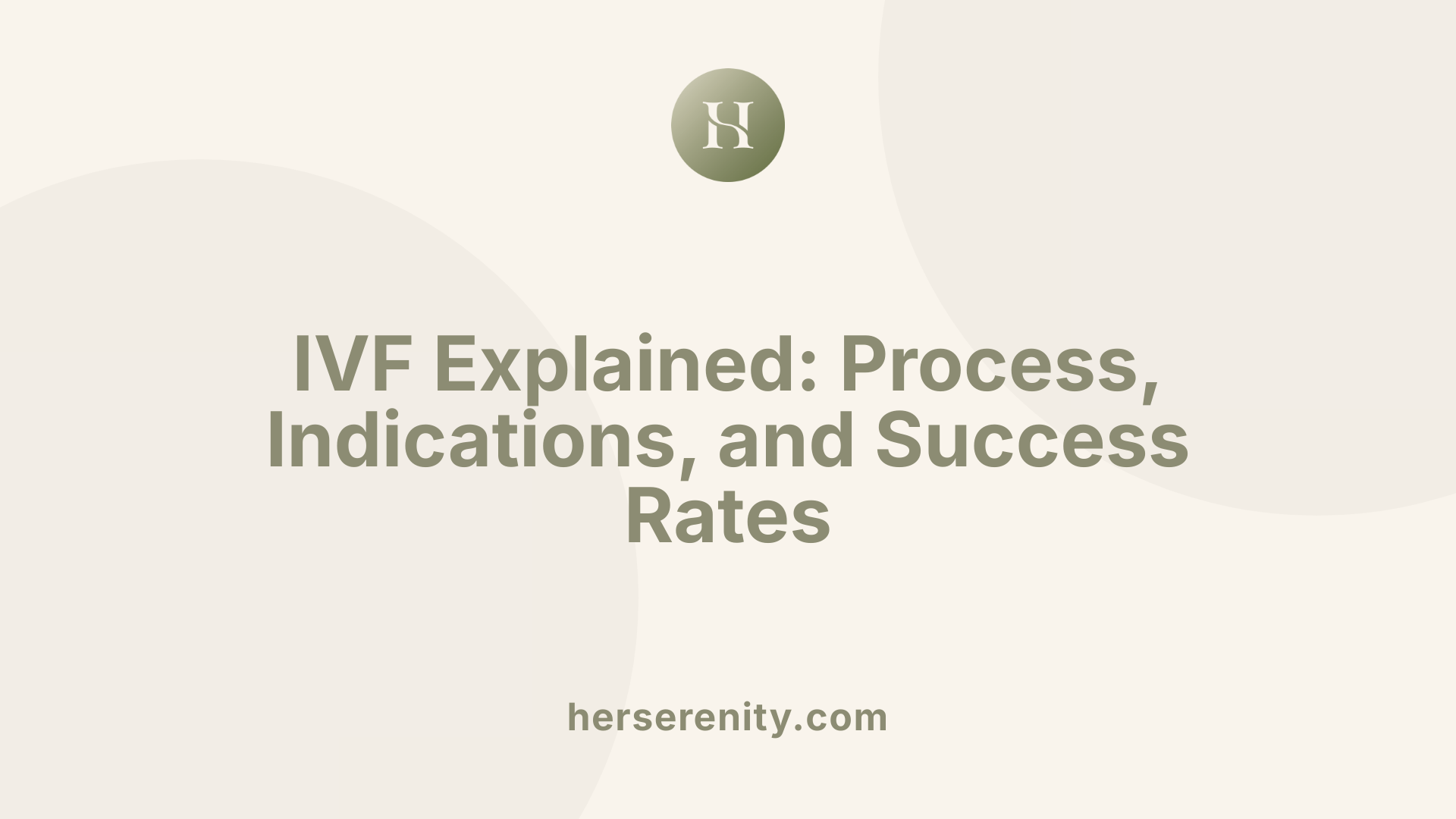
How does in vitro fertilization (IVF) work and when is it recommended?
In vitro fertilization (IVF) is a widely used assisted reproductive technology that facilitates conception for individuals or couples facing fertility challenges. The IVF process begins with ovarian stimulation, where a woman receives hormonal treatments to encourage the development of multiple eggs in her ovaries instead of the usual single egg. Once mature, these eggs are retrieved through a minimally invasive surgical procedure called follicular aspiration.
In the laboratory, the retrieved eggs are fertilized with sperm. For certain cases such as severe male factor infertility, a technique called intracytoplasmic sperm injection (ICSI) is used, where a single sperm is directly injected into an egg. The fertilized embryos are then cultured for several days, typically up to the blastocyst stage, allowing embryologists to assess their quality.
Following embryo development, the best embryos are selected and transferred into the woman’s uterus. This transfer aims to establish implantation and pregnancy. If necessary, remaining viable embryos can be frozen for future use.
IVF is recommended for a range of fertility issues, including:
- Blocked or damaged fallopian tubes
- Endometriosis
- Male factor infertility such as low sperm count or poor sperm motility
- Polycystic ovary syndrome (PCOS)
- Unexplained infertility after standard evaluations
- Advanced maternal age, usually women aged 35 and older
Typically, the whole IVF treatment cycle lasts about four to six weeks. While generally safe, IVF carries some risks including multiple pregnancies, which can increase complications, and ovarian hyperstimulation syndrome (OHSS), a reaction to hormone medications.
Success rates depend on multiple factors, most notably the woman’s age and the underlying cause of infertility. For women under 35, the approximate live birth rate per IVF cycle is around 46.7%. Success rates tend to decline with increasing age due to factors such as diminished egg quality.
Overall, IVF has transformed reproductive medicine by offering hope to many who struggle with infertility, providing tailored treatment strategies based on individual clinical profiles.
Risks and Outcomes Associated with IVF and Embryo Transfer

What risks and success rates are associated with fertility treatments like IVF?
In vitro fertilization (IVF) success rates depend heavily on multiple factors including maternal age, embryo quality, and the method of embryo transfer. For women under 35, live birth rates per IVF cycle commonly range from 45% to 55%. However, success rates tend to decline significantly after age 37, largely due to diminished egg quality and other biological influences.
Advancements in reproductive technology have improved outcomes for IVF patients. The adoption of frozen embryo transfers and elective single embryo transfers has increased pregnancy success while lowering the risk of complications such as multiple pregnancies.
Despite its benefits, IVF carries several risks. These include ovarian hyperstimulation syndrome (OHSS), multiple gestations, ectopic pregnancies, and a slightly elevated risk of birth defects compared to natural conception. However, careful medical management can mitigate most of these complications.
Embryo quality notably affects both success rates and risks. High-quality embryos, often evaluated through genetic testing like preimplantation genetic testing for aneuploidy (PGT-A), show higher implantation rates and reduced miscarriage chances. Though the presence of mosaic embryos—those with mixed chromosomal cell lines—adds complexity to decision-making, many such embryos still result in healthy live births.
In summary, while IVF success varies individually, personalized treatment plans and newer technologies have optimized outcomes and minimized risks, making IVF a viable option for many seeking fertility assistance.
Personalized Fertility Treatment Planning: A Collaborative Approach

How do medical professionals determine the best treatment plan for a couple struggling with conception?
Medical professionals begin by performing comprehensive evaluations that delve into various aspects of reproductive health. These assessments typically include hormone testing to check for endocrine imbalances, semen analyses to evaluate sperm quality and quantity, and imaging studies such as ultrasounds to observe the reproductive organs. Additionally, a thorough review of medical histories helps pinpoint any underlying conditions affecting fertility.
Lifestyle factors are given particular attention as well, with nutrition, physical activity, and stress levels considered crucial elements influencing reproductive success. Addressing these factors can sometimes improve outcomes without the need for invasive interventions.
Creating an individualized treatment plan is a collaborative process. Clinicians engage in open discussions with couples to understand their personal values, emotional readiness, and family-building goals. This partnership ensures that medical options like intrauterine insemination (IUI), in vitro fertilization (IVF), alternative methods such as INVOcell, or surrogacy are presented transparently, highlighting benefits and potential challenges.
The goal is to tailor interventions that align with each couple’s unique circumstances and preferences. Throughout the journey, a compassionate care team supports patients in navigating complex decisions, emphasizing shared decision-making and emotional well-being.
Patient-Clinician Collaboration and Lifestyle Considerations
Effective fertility treatment planning extends beyond medical diagnostics. Lifestyle modifications, including improved diet, cessation of smoking, and stress reduction strategies, are often incorporated to optimize reproductive potential.
Open communication fosters trust and empowers couples to actively participate in their care. Emotional factors such as anxiety and resilience are addressed through counseling and support services, complementing medical treatments.
This integrated approach acknowledges that fertility treatment is not one-size-fits-all. Instead, it embraces the nuances of each couple’s journey, enabling personalized care that maximizes the chance of a successful pregnancy and a healthy future family.
Lifestyle Factors Affecting Fertility and Treatment Success

What lifestyle factors can influence reproductive health and success of conception treatments?
Lifestyle choices significantly impact reproductive health and the effectiveness of fertility treatments. Maintaining a healthy weight through balanced nutrition and regular physical activity encourages proper hormonal balance, which is essential for ovulation and sperm production. Both obesity and being underweight can disrupt fertility in men and women, diminishing the likelihood of conception.
Avoiding harmful substances such as tobacco, excessive alcohol, and illicit drugs is vital to protect reproductive organs and preserve genetic integrity in gametes. Smoking, for instance, is linked to reduced ovarian reserve and sperm quality, while alcohol can impair hormone levels and ovulation.
Stress also plays a notable role in fertility. High stress levels may disrupt hormone regulation and conceiving chances. Therefore, stress management strategies including mindfulness, therapy, or relaxation techniques can enhance fertility outcomes.
Exposure to environmental toxins like pesticides, heavy metals, and endocrine disruptors should be minimized to prevent damage to reproductive cells. Additionally, infections that affect reproductive organs should be promptly treated to avoid complications.
In summary, a lifestyle focusing on balanced nutrition, avoidance of harmful substances, stress reduction, and protection from toxins and infections can optimize reproductive health and improve the chances of successful conception and fertility treatment results.
Ethical Considerations in Modern Fertility Treatments and Genetic Testing
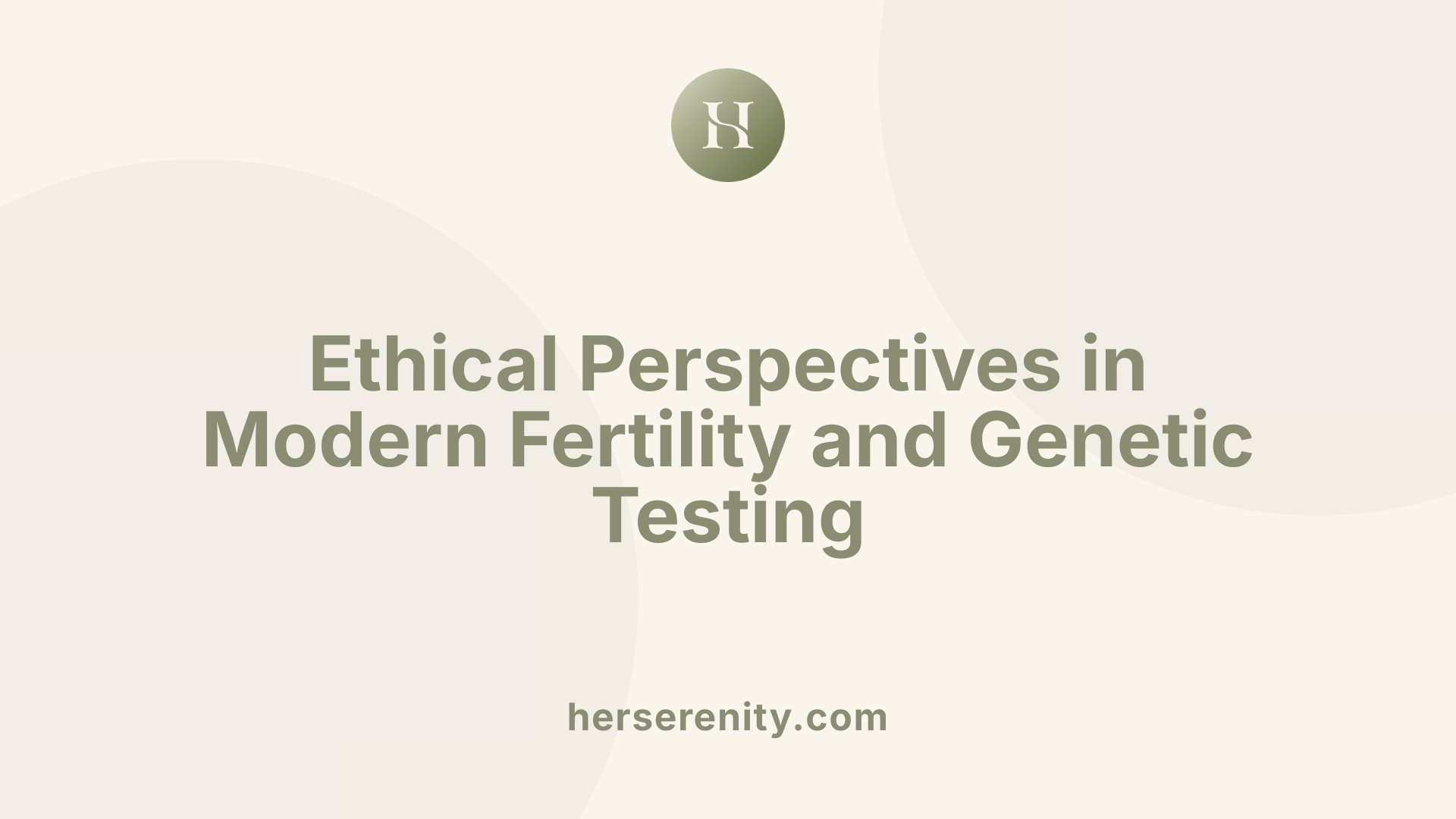
What ethical considerations surround fertility treatments and reproductive technologies?
Fertility treatments and reproductive technologies involve complex ethical issues that must be carefully managed. One major area of concern is embryo selection and handling. Decisions about which embryos to transfer, freeze, or discard require respectful and responsible approaches that honor the potential life involved. The rise of genetic testing, including preimplantation genetic testing for aneuploidy (PGT-A), adds layers of complexity by allowing detection of chromosomal abnormalities and mosaicism, which influence embryo viability and pregnancy outcomes.
Equally important is the principle of informed consent. Patients need comprehensive counseling about the scope, benefits, and limitations of genetic tests, such as PGT-A’s inability to fully predict embryo reproductive potential or guarantee chromosomal normalcy. Transparency about risks, including the uncertainty surrounding mosaic embryo transfers and their outcomes, empowers patients to make decisions aligned with their values.
Another ethical dimension involves access disparities. Fertility treatments can be prohibitively expensive, contributing to socioeconomic inequities in who can benefit from advanced reproductive technologies. Ethical practice calls for efforts to make treatments more equitable and accessible to diverse populations.
Regarding genetic testing ethics, concerns focus on the interpretation and use of test results. Technologies like next-generation sequencing can detect mosaic embryos, raising difficult questions about whether to transfer such embryos and how to counsel patients about associated risks and uncertainties. These dilemmas underline the need for clinics to develop clear policies on the reporting, management, and follow-up of mosaic embryos.
Finally, the potential for eugenics remains a profound ethical concern. The ability to screen embryos for selected traits or chromosomal patterns might tempt misuse in favor of non-medical trait selection, which poses societal risks such as genetic discrimination and undermining diversity. Professional guidance stresses using genetic testing responsibly, aligned with ethical norms and legal regulations.
Health care providers follow ethical frameworks like the American Medical Association’s Code of Medical Ethics and professional society guidelines to navigate these issues, promoting patient autonomy, beneficence, and justice in reproductive care.
Preimplantation Genetic Testing (PGT): Types and Clinical Applications
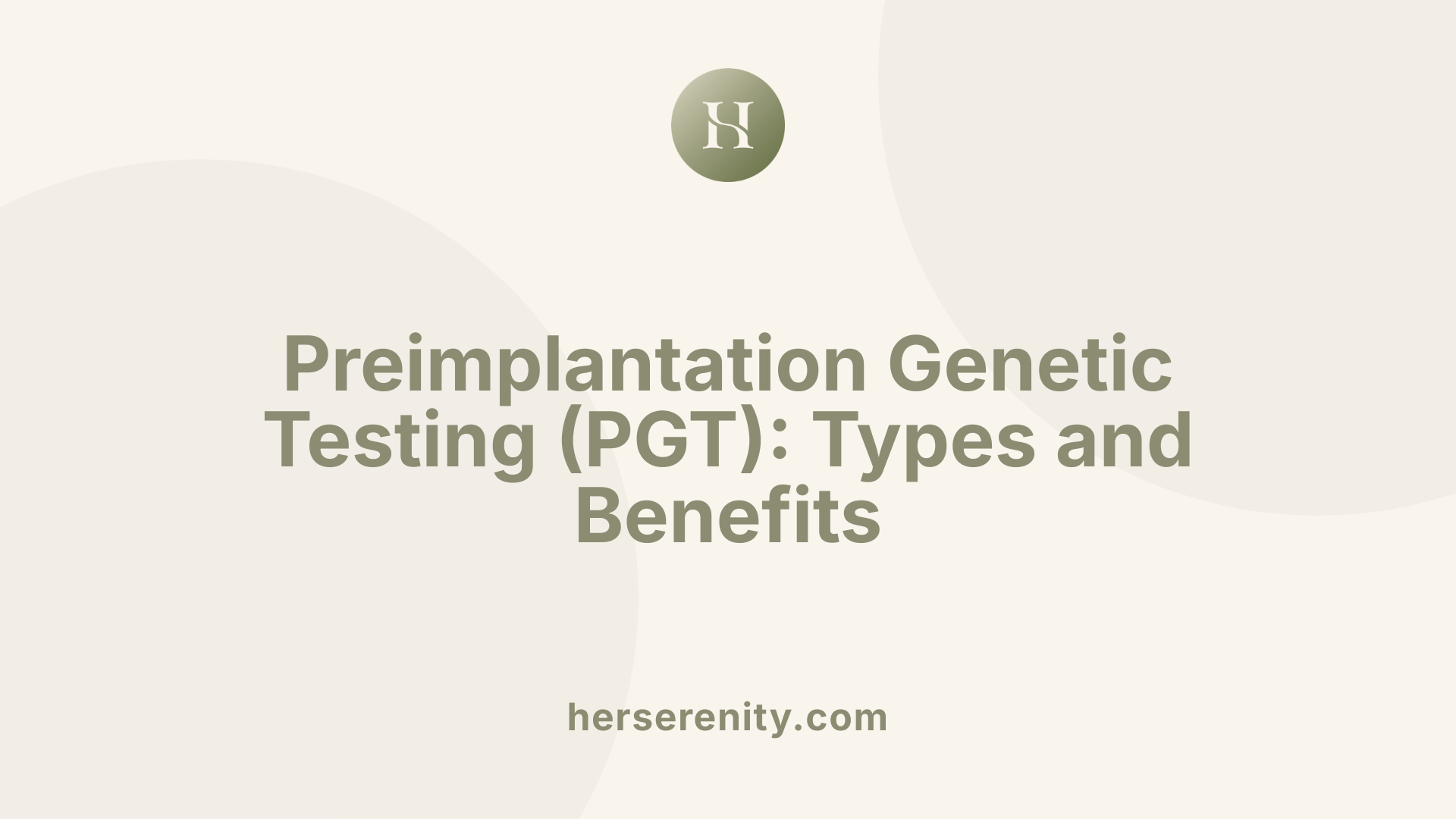
Overview of PGT Types
Preimplantation genetic testing (PGT) is a genetic screening performed on embryos during in vitro fertilization (IVF) to identify genetic abnormalities that may affect implantation, miscarriage risk, or birth defects. There are three main types:
- PGT-A (Aneuploidy): Screens for abnormal numbers of chromosomes across all 24 chromosomes, such as trisomy 21 (Down syndrome) or Turner syndrome. This is the most commonly used PGT type, applied in over 40% of IVF cycles in the U.S.
- PGT-M (Monogenic): Targets specific single-gene disorders like cystic fibrosis, Huntington disease, or hereditary cancer syndromes. It tests embryos for parental mutations.
- PGT-SR (Structural Rearrangements): Used for embryos at risk due to parental chromosomal rearrangements, including translocations and inversions that can lead to miscarriage or genetic disorders.
Testing Procedures
PGT is typically performed on blastocyst-stage embryos (usually day 5 or 6 post-fertilization) by biopsying 3-10 cells from the trophectoderm, the outer layer that becomes the placenta. Next-generation sequencing (NGS) has become the preferred method, enabling comprehensive analysis of all chromosomes and detecting mosaicism—the presence of more than one chromosomally distinct cell line within the embryo.
Results from the biopsy are typically available within 7 to 10 days. Following testing, embryos can be selected for transfer based on their chromosomal status.
Clinical Utility
PGT-A: While once thought to drastically improve IVF outcomes, recent multicenter randomized studies suggest PGT-A does not significantly affect overall live birth rates compared to conventional IVF, particularly in younger women. However, it is useful in reducing miscarriage rates and implantation failures in select groups such as women over 35 or those with recurrent pregnancy loss.
PGT-M and PGT-SR: The clinical utility of these tests is well established. They enable prospective parents to avoid passing on serious inherited conditions or structural chromosome abnormalities and are often accompanied by confirmatory prenatal diagnostic tests like chorionic villus sampling or amniocentesis during pregnancy.
Genetic counseling is recommended to explain the benefits, limitations, and possible outcomes of PGT for all patients considering these tests.
Defining Mosaicism in Embryos: Genetic and Biological Foundations
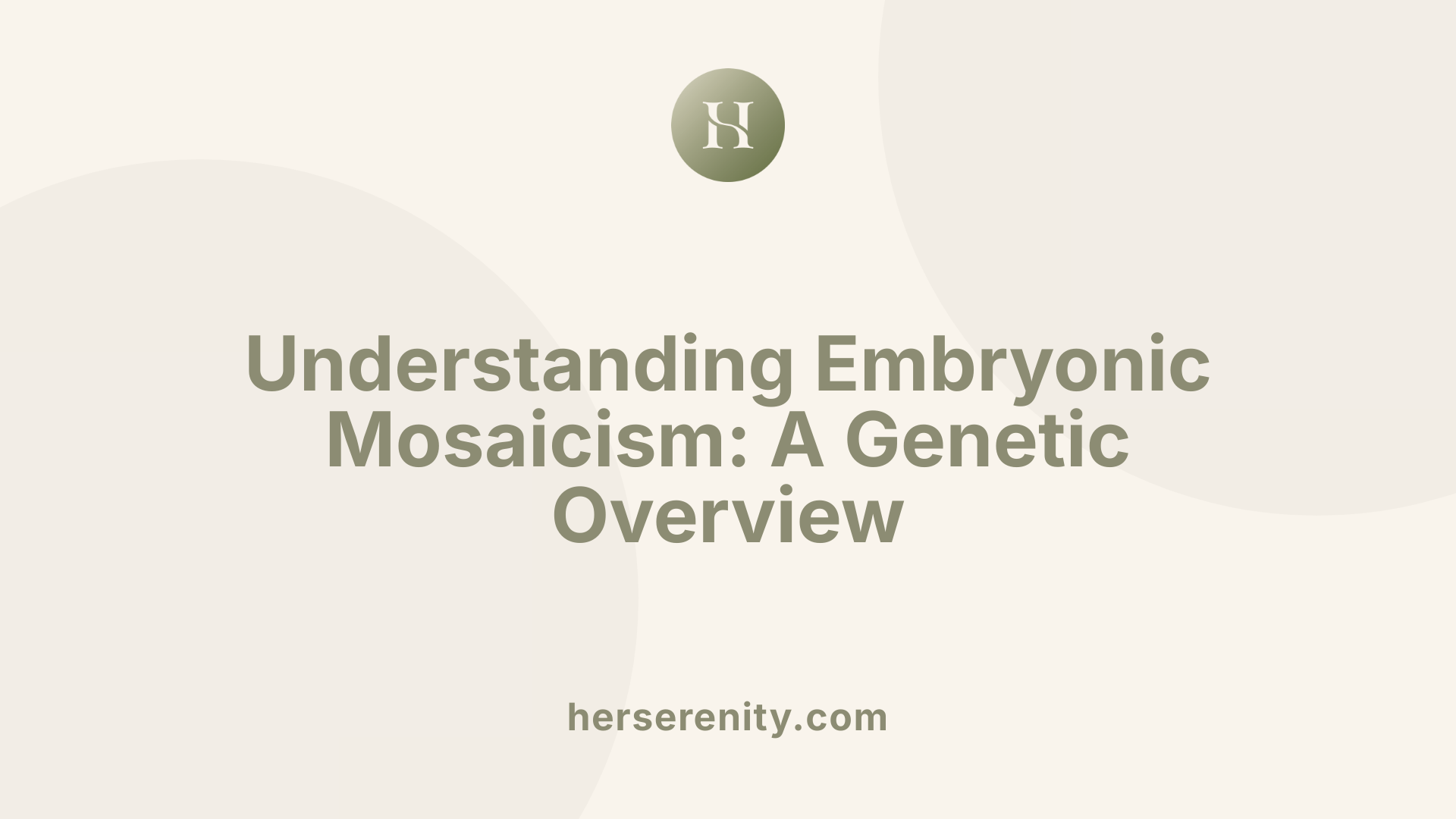
What is Mosaicism in Embryos?
Mosaicism in embryos refers to the presence of two or more genetically different cell populations within the same embryo. This condition is detected through intermediate DNA copy number signals identified by next-generation sequencing (NGS) techniques used in preimplantation genetic testing for aneuploidy (PGT-A).
Genetic Basis of Embryonic Mosaicism
Mosaicism arises from post-zygotic mitotic errors during the early cell divisions after fertilization. These errors lead to genotypically distinct cell lines coexisting in the embryo, where some cells harbor chromosomal abnormalities while others remain chromosomally normal.
Types of Mosaicism
There are four recognized types of mosaicism classified by their location within the embryo and timing of occurrence:
- Total Mosaicism: Involves abnormal cells throughout the embryo.
- Inner Cell Mass (ICM) Mosaicism: Affects the cell population destined to become the fetus.
- Trophectoderm (TE) Mosaicism: Involves the outer cell layer that forms the placenta.
- ICM/TE Mosaicism: Displays mosaicism in both embryonic and placental precursor cells.
Understanding the type of mosaicism helps in clinical decision-making and predicting potential outcomes.
Causes of Mosaicism
Mosaicism stems from both biological and technical factors. Biologically, it often results from mitotic errors during early embryonic cell divisions. Factors influencing mosaicism include maternal age and sperm quality. On the technical side, laboratory methods such as DNA amplification protocols, biopsy techniques, and environmental conditions can also affect detection rates and reported mosaicism levels.
Recognition of embryo mosaicism has significantly improved due to advancements in genetic diagnostic methods, particularly NGS, which allow detection and quantification of mosaic chromosomal abnormalities within a single embryo.
Detection of Mosaic Embryos Through Advanced Genetic Technologies
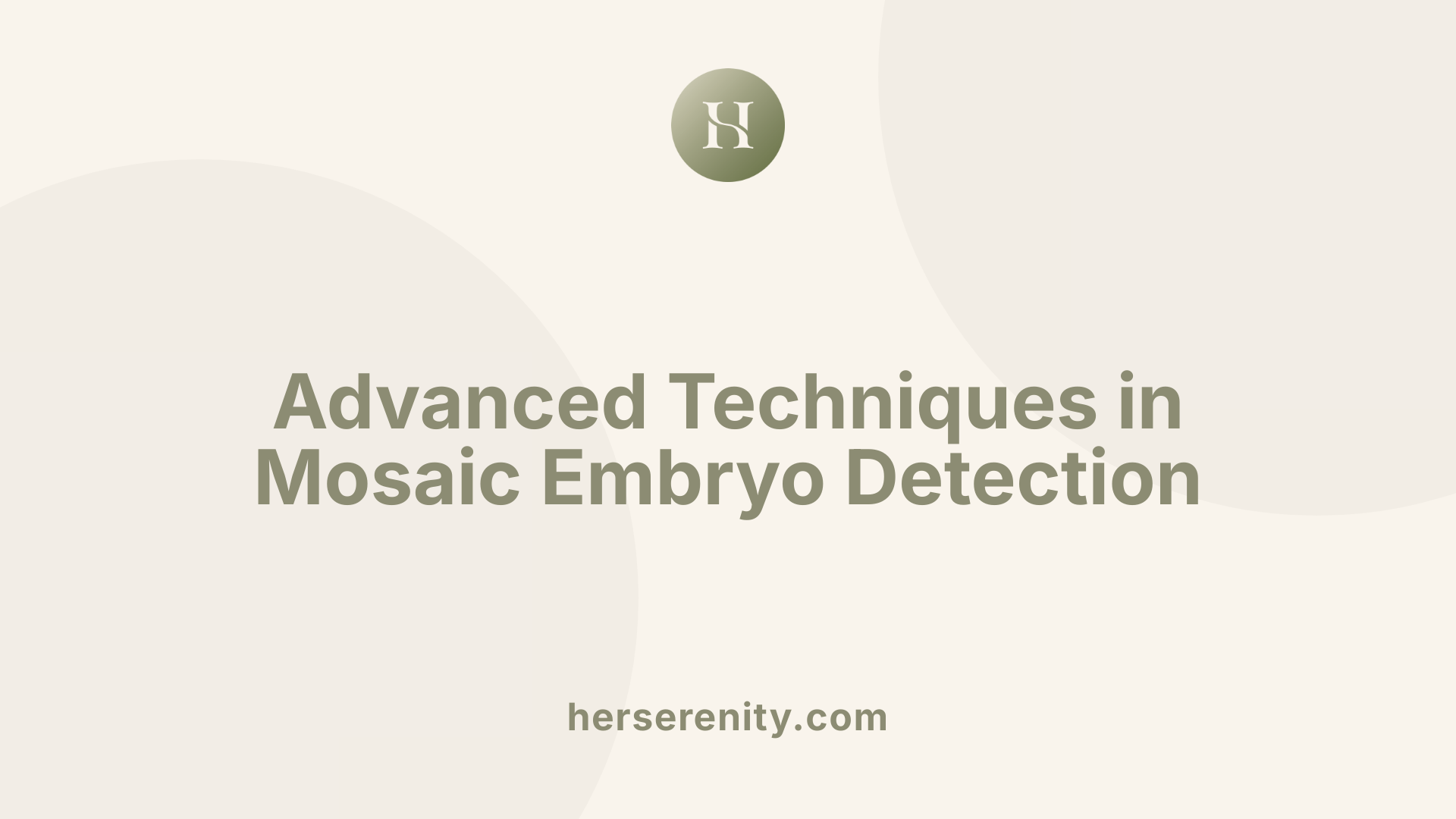
What is Next-Generation Sequencing (NGS) and Its Role in Detecting Mosaic Embryos?
Next-Generation Sequencing (NGS) is a powerful genetic testing technology used in Preimplantation Genetic Testing for Aneuploidy (PGT-A) during IVF. It examines all 24 chromosomes in embryos at a high resolution, allowing for detailed analysis of DNA copy number variations. Unlike earlier methods, NGS can detect subtle variations, including the presence of multiple distinct cell lines within an embryo — a condition known as mosaicism.
Advantages of NGS Compared to Earlier Methods
Earlier technologies, such as Fluorescence In Situ Hybridization (FISH), analyzed fewer chromosomes and had limited sensitivity for mosaicism. NGS provides comprehensive chromosomal screening with improved accuracy and the ability to quantify the proportion of abnormal cells within a biopsy. This allows clinicians to identify embryos with varying degrees of mosaicism, informing more nuanced reproductive decisions.
Frequency of Mosaicism Detection with Modern Techniques
Mosaicism detection rates vary widely, reported between 2% to over 20% in trophectoderm biopsies. This variability depends on several factors, including embryo developmental stage and the sensitivity of analytic platforms. Mosaicism appears more frequently in cleavage-stage embryos and can range from low-level (<50% abnormal cells) to high-level mosaicism. Such identification has only become possible with advances like NGS.
Laboratory Variability and Reporting Differences
Laboratories differ in their technical protocols, including DNA amplification and biopsy methods, which affect mosaicism detection rates. Reporting thresholds for defining mosaic embryos are not standardized, resulting in variability in clinical interpretation. Some labs apply strict criteria, while others may report intermediate findings differently, influencing patient counseling and management.
Through advances in NGS, the detection and understanding of mosaic embryos have significantly improved, highlighting the importance of standardized laboratory practices and comprehensive genetic counseling in IVF treatment planning.
Clinical Implications of Transferring Mosaic Embryos in IVF
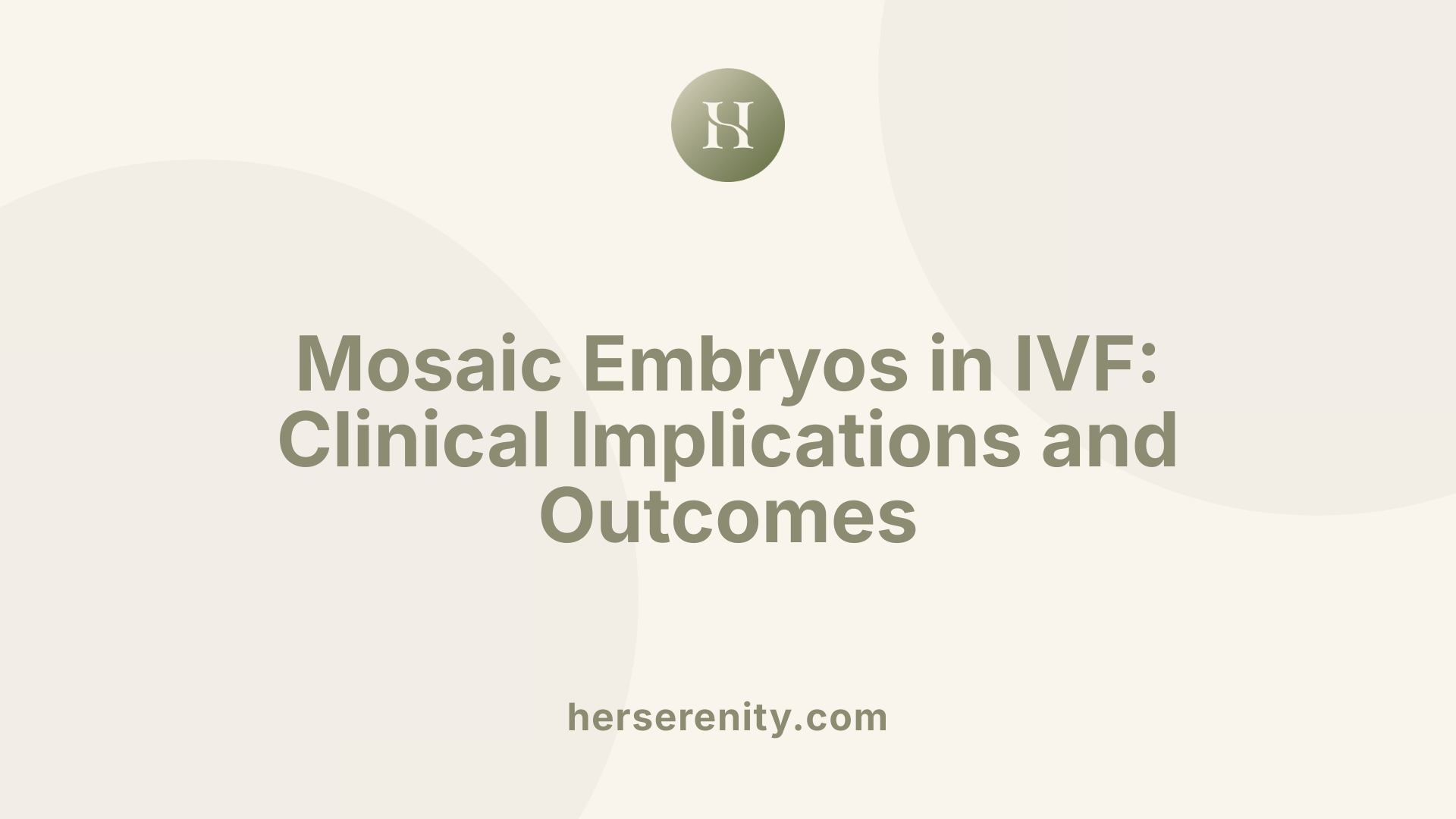
How do implantation rates of mosaic embryos compare to euploid embryos?
Embryos identified as mosaic through PGT-A show reduced implantation rates compared to fully euploid embryos. Studies report a noticeable decrease, making implantation less likely but still possible. Despite this, many mosaic embryos with less than 50% abnormal cells achieve implantation successfully, reflecting some retained reproductive potential.
What are the miscarriage risks associated with mosaic embryo transfers?
Miscarriage rates are higher after transferring mosaic embryos compared to euploid ones. The presence of chromosomally abnormal cells correlates with increased pregnancy loss; however, the overall risk is variable and depends on the degree and type of mosaicism. Notably, the risk of fetal aneuploidy following mosaic embryo transfer is low, estimated at less than 1% in large cohort studies.
What birth outcomes are observed following mosaic embryo transfers?
Over 2,700 mosaic embryos have been transferred worldwide, with many resulting in healthy live births. While some cases have detected mosaic or aneuploid cell lines prenatally or postnatally, the majority of infants are phenotypically normal. The clinical consequences of low-level mosaicism identified in newborns remain uncertain, and ongoing monitoring through prenatal and postnatal genetic testing is recommended.
How do chromosomal risks influence clinical decisions when transferring mosaic embryos?
Not all chromosomes carry the same risk when involved in mosaicism. Chromosomes 13, 16, 18, and 21 have been linked to higher risks of adverse outcomes if mosaic. Segmental mosaicism, which affects only parts of chromosomes, may carry similar or lower risks compared to whole-chromosome mosaicism. Understanding which chromosomes are involved assists clinicians in counseling patients and making informed choices.
| Aspect | Mosaic Embryos | Euploid Embryos | Clinical Note |
|---|---|---|---|
| Implantation Rate | Reduced compared to euploid | Higher implantation success | Mosaic embryos with low-level mosaicism (<50%) show better outcomes than high-level mosaicism |
| Miscarriage Risk | Increased but fetal aneuploidy risk <1% | Lower miscarriage rates | Degree and chromosome involved influence risk |
| Birth Outcomes | Mostly healthy live births, some low-level aneuploidy detected | Generally healthy offspring | Prenatal and postnatal follow-up essential |
| Chromosomal Involvement | Chromosomes 13,16,18,21 bear higher risks | Normal chromosomal complement | Mosaicism type (ICM vs. TE) affects prognosis |
Challenges and Limitations in Predicting Mosaic Embryo Viability
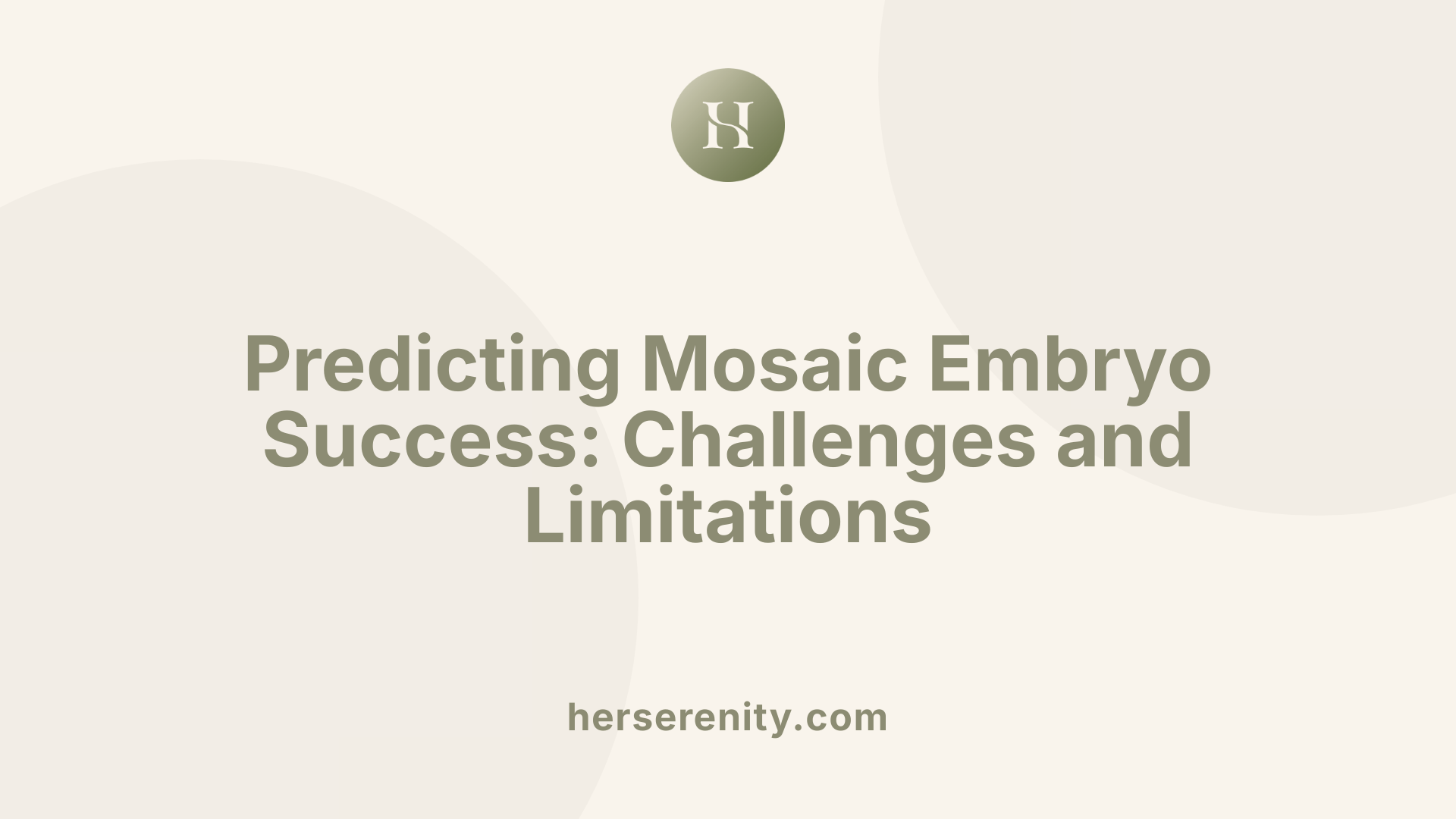
Lack of Standard Predictive Methods
Currently, there is no universally accepted method to accurately predict the reproductive potential of embryos diagnosed as mosaic during preimplantation genetic testing for aneuploidy (PGT-A). This limitation stems largely from the complexity and variability inherent in mosaicism itself, where embryos contain both normal and abnormal cell lines.
Laboratory Threshold Differences
The criteria and thresholds for diagnosing mosaicism vary significantly among laboratories. These differences influence the frequency at which mosaic embryos are reported, with rates ranging from 2% to over 20% depending on the assay sensitivity and cutoffs used. Such variability complicates clinical decision-making, as what one lab classifies as mosaic might be considered euploid or aneuploid elsewhere.
Uncertainties in Embryo Potential
Despite some mosaic embryos resulting in successful pregnancies and healthy live births, outcomes are generally less favorable compared to purely euploid embryos, including lower implantation rates and higher miscarriage risk. However, the risk of fetal aneuploidy following transfer of mosaic embryos remains low (less than 1%). Even so, the biological behavior of mosaic embryos, influenced by factors such as the proportion of abnormal cells and the specific chromosomes involved, is not fully understood. These uncertainties necessitate cautious interpretation and emphasize the importance of personalized genetic counseling when considering mosaic embryo transfer.
Role and Importance of Genetic Counseling in Mosaic Embryo Transfer
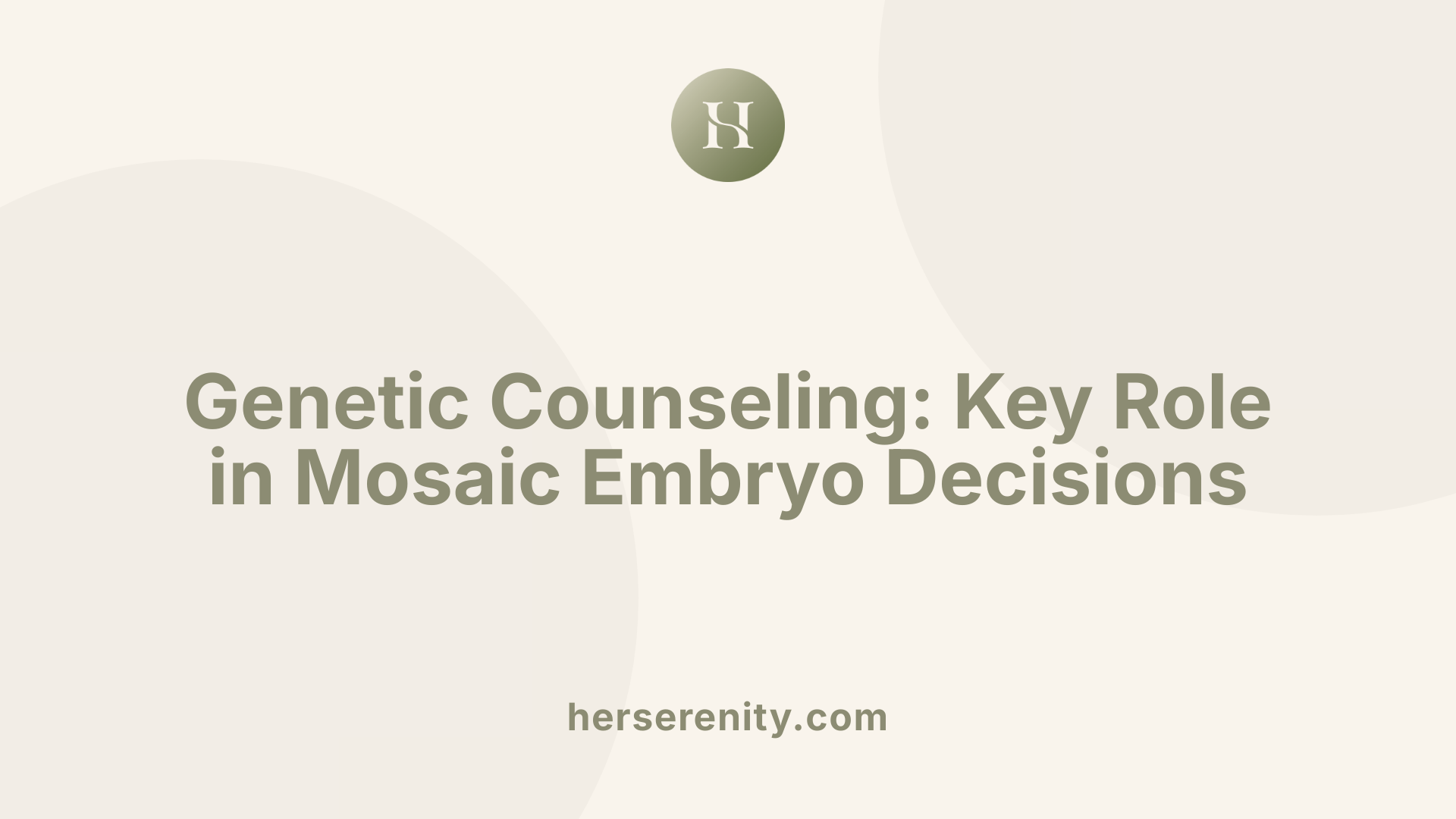
What is the role of genetic counseling before and after mosaic embryo transfer?
Genetic counseling plays a crucial role both before and after the transfer of mosaic embryos identified through PGT-A. Before transfer, counseling helps patients understand the nature of mosaicism, the associated uncertainties, and the potential reproductive outcomes. It ensures patients are well-informed about the limited predictive value of current testing technologies and supports them in making decisions about embryo selection.
After transfer, counselors provide ongoing support and guide patients through prenatal diagnostic options and monitoring, helping them interpret test results and prepare for possible outcomes.
How are risks communicated during genetic counseling?
Counseling emphasizes clear communication about the risks associated with mosaic embryo transfer. Patients are informed that while implantation and live birth are possible, mosaic embryos show reduced implantation rates and increased miscarriage risk compared to euploid embryos.
Importantly, the actual risk of fetal aneuploidy after mosaic embryo transfer is very low, estimated to be less than 1%. However, fetal or neonatal mosaicism has occasionally been reported, with most infants appearing phenotypically normal. Counselors explain these complexities to prevent misinformation or unrealistic expectations.
Why is patient informed consent essential?
Informed consent is a foundational component addressed during genetic counseling. Because mosaic embryo transfer involves uncertainty regarding pregnancy outcomes and potential chromosomal abnormalities, it is vital for patients to voluntarily consent after understanding the benefits, risks, and limitations of current testing methods.
Counseling encourages patients to consider ethical implications and personal values, empowering them to make decisions aligned with their reproductive goals and comfort levels.
What prenatal diagnostic testing is recommended after mosaic embryo transfer?
Post-transfer, prenatal testing is strongly advised to assess fetal chromosomal status. While noninvasive prenatal testing (NIPT) cannot reliably detect mosaicism, invasive diagnostic procedures such as chorionic villus sampling (CVS) or amniocentesis offer more definitive results.
Continuous monitoring through these tests can detect chromosomal abnormalities that PGT-A might have missed or could not fully characterize. This helps clinicians manage pregnancies with appropriate care and supports families in anticipating their baby's health needs.
Overall, genetic counseling ensures patients considering mosaic embryo transfer receive a comprehensive understanding of potential outcomes and supports informed, personalized reproductive decision-making.
Current Clinical Guidelines and Laboratory Policies on Mosaic Embryos
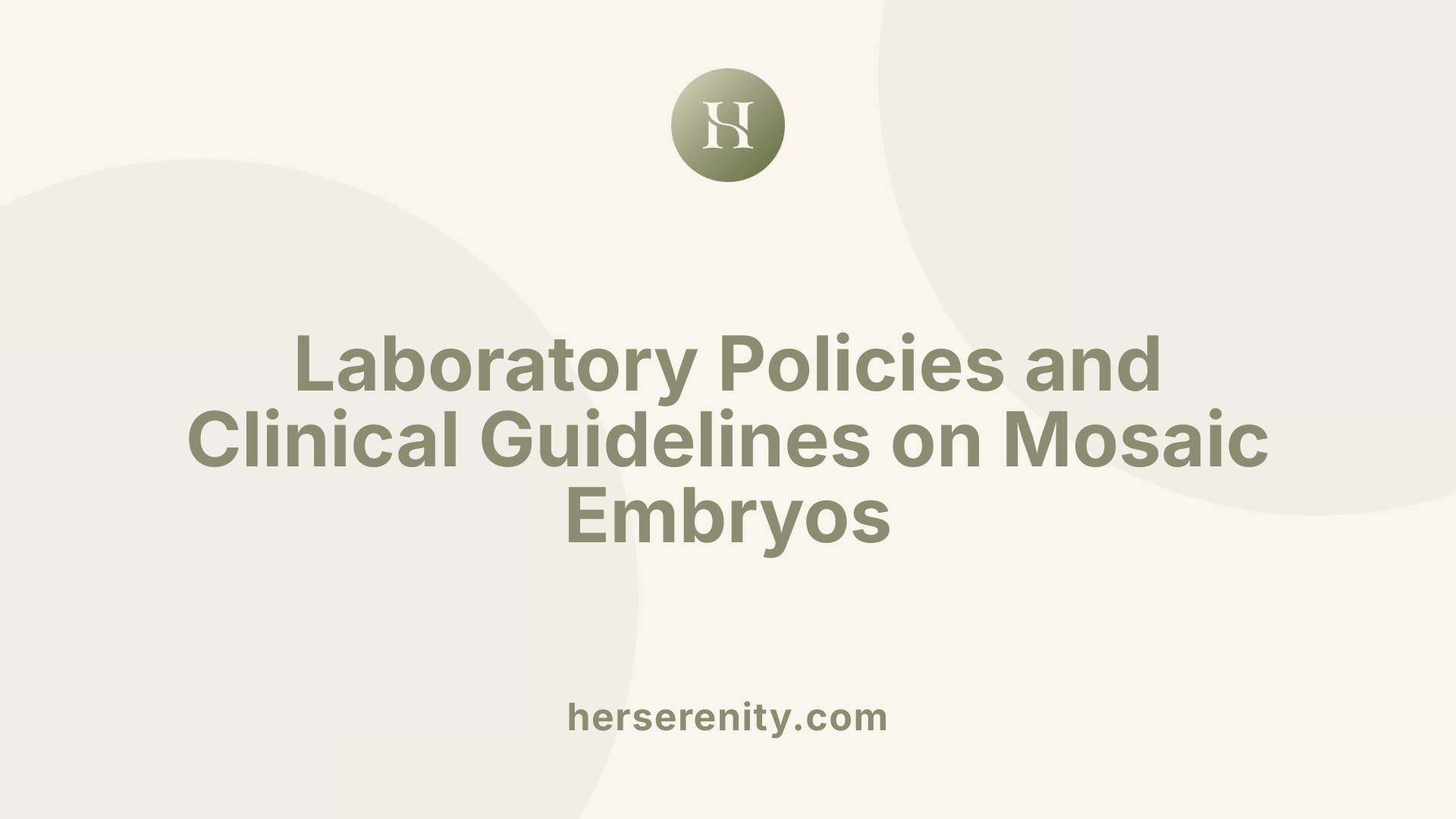
How Are Mosaic Embryos Reported in Laboratories?
Reporting standards for mosaic embryos differ across laboratories due to the absence of a universal protocol. Laboratories utilize next-generation sequencing (NGS) to detect mosaicism, classifying embryos based on the percentage of abnormal cells. Typically, embryos with less than 50% mosaicism are considered low-level and may have better clinical outcomes than those classified as high-level mosaicism. However, thresholds for labeling an embryo as mosaic vary, influencing how results are communicated to clinicians and patients.
What Are the Recommendations for Transfer Prioritization?
Clinical guidelines generally recommend prioritizing the transfer of euploid embryos over mosaic embryos because euploid transfers have higher implantation and live birth rates with lower miscarriage risks. Nevertheless, low-level mosaic embryos, especially those with less than 50% aneuploid cells, may still be considered for transfer when no euploid embryos are available. The decision often depends on the specific chromosomes involved and the degree of mosaicism, with caution advised when chromosomes associated with higher risks (e.g., 13, 16, 18, 21) are implicated.
How Should Clinics Develop Policies for Mosaic Embryo Management?
Individual fertility clinics are encouraged to establish their own policies regarding the reporting, transfer, and management of mosaic embryos. These policies should align with current evidence while addressing local ethical considerations and patient needs. Essential components include obtaining informed patient consent, comprehensive pre- and post-transfer genetic counseling, and clear communication about the uncertainties and potential outcomes associated with mosaic embryo transfer.
What Follow-Up Is Recommended After Mosaic Embryo Transfer?
Given the uncertainties surrounding mosaic embryos, thorough follow-up is strongly advised. This includes prenatal testing through invasive diagnostic methods such as amniocentesis or chorionic villus sampling to assess fetal chromosomal status since noninvasive prenatal testing (NIPT) cannot reliably detect mosaicism. Postnatal genetic testing and clinical monitoring of the newborn are also recommended to identify any anomalies early. Genetic counseling should continue throughout pregnancy and after birth to support families in understanding results and implications.
Future Directions and Ongoing Research in PGT and Mosaicism
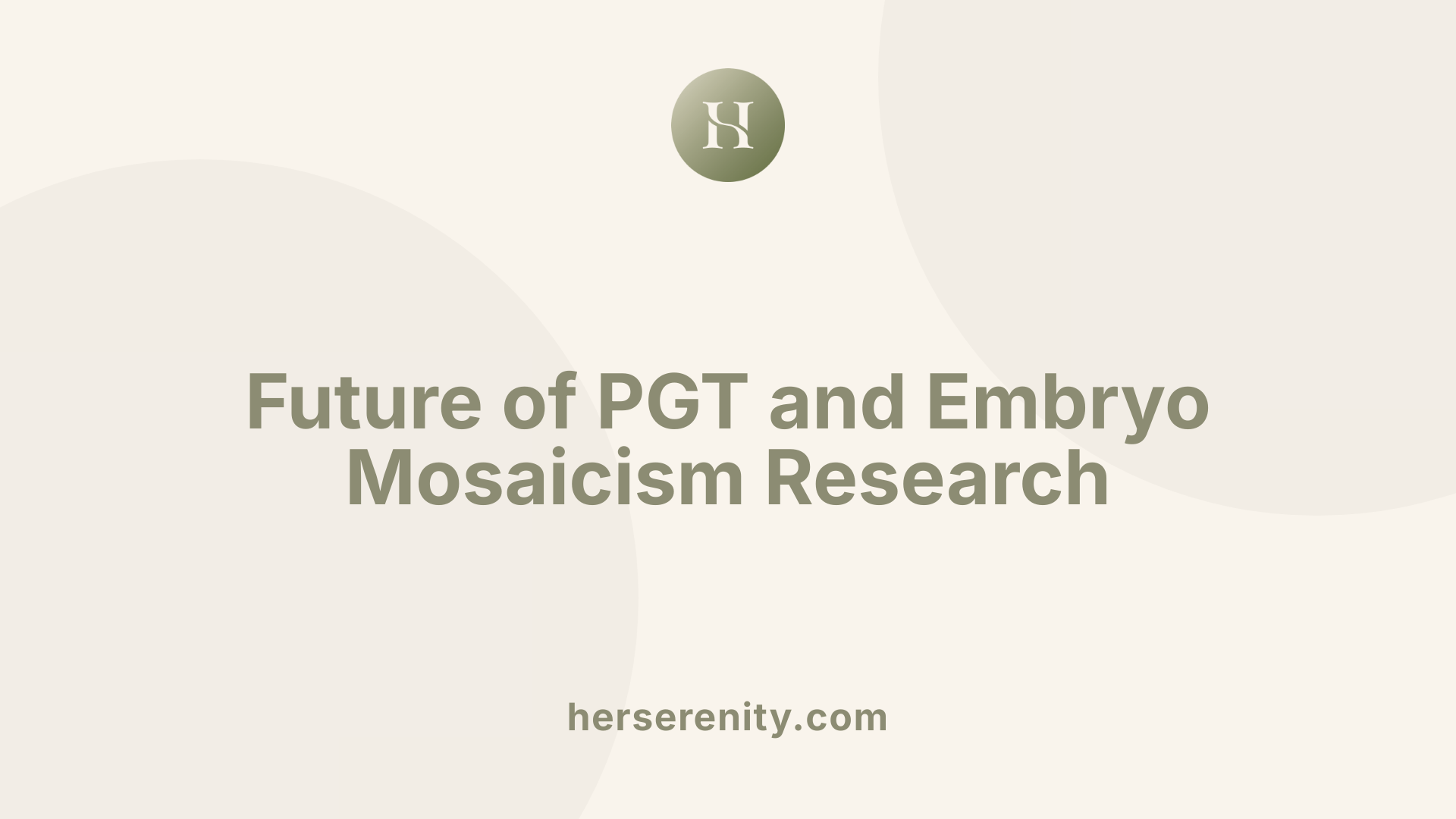
How Are Testing Technologies Evolving in Preimplantation Genetic Testing?
Advancements in genetic testing technology, especially next-generation sequencing (NGS), have revolutionized the detection and quantification of mosaicism in embryos. Unlike earlier methods such as fluorescence in situ hybridization (FISH) that screened fewer chromosomes, NGS allows comprehensive analysis of all 24 chromosomes, increasing sensitivity to intermediate chromosomal abnormalities in embryo biopsies. As laboratories refine amplification protocols and biopsy techniques, the ability to distinguish low- from high-level mosaicism continues to improve. These technical improvements are central to enhancing diagnostic accuracy and reducing false results.
What Are the Research Priorities for Long-Term Outcomes?
Long-term follow-up studies are crucial to understanding the clinical significance of mosaicism detected by PGT-A. Although over 2,700 mosaic embryos have been transferred with most resulting children exhibiting normal phenotypes, uncertainties remain about subtle developmental or genetic effects that might manifest later. Current research focuses on prenatal and postnatal genetic testing to monitor such outcomes. More comprehensive data will help clarify risks of fetal aneusomy and mosaicism-related complications over an individual's lifespan.
How Is Patient Selection for PGT-A and Mosaic Embryo Transfer Being Refined?
Research continues to explore which patient groups benefit most from PGT-A and mosaic embryo transfer. Presently, PGT-A is primarily recommended for women of advanced maternal age, those with recurrent pregnancy loss, or with unexplained infertility. Ongoing studies aim to further refine these criteria by integrating mosaic status, chromosome-specific effects, and the level of mosaicism. Better stratification may help avoid unnecessary embryo discards and optimize pregnancy outcomes by identifying embryos with favorable potential despite mosaic findings.
What Are the Ethical and Clinical Challenges in Managing Mosaic Embryos?
Mosaic embryos present unique ethical and clinical dilemmas. Uncertainties regarding their reproductive potential, coupled with variable laboratory thresholds and differences in reporting practices, complicate counseling and decision-making. Ethical concerns also surround the potential for selective embryo transfer and the implications of embryo selection. Future guidelines will likely emphasize informed consent, thorough genetic counseling about risks and limitations, and individualized management plans supported by emerging evidence.
These ongoing research efforts in technology, outcomes, patient selection, and ethical frameworks aim to enhance the clinical utility and safety of PGT-A. As understanding evolves, improved protocols and consensus will help support optimal reproductive outcomes while addressing patient concerns in the era of advanced reproductive genetics.
Concluding Insights on Mosaic Embryos in Assisted Reproduction
Mosaic embryos identified through PGT-A represent a complex and nuanced challenge in the field of reproductive medicine. While they may demonstrate reduced implantation potential and slightly elevated risks compared to euploid embryos, many mosaic embryos have successfully resulted in healthy live births. Advances in genetic testing technologies, coupled with robust genetic counseling and personalized clinical decision-making, are essential to optimize outcomes for patients considering mosaic embryo transfer. As research continues to clarify the long-term implications and refine predictive methodologies, individualized patient care built on informed consent and careful ethical consideration remains paramount in managing mosaic embryos within assisted reproductive treatments.
References
- Clinical management of mosaic results from ...
- Preimplantation genetic testing for aneuploidy
- The “mosaic” embryo: misconceptions and ...
- A Guide to Preimplantation Genetic Testing (PGT)
- The use of preimplantation genetic testing for aneuploidy
- Preimplantation Genetic Testing
- ASRM: American Society for Reproductive Medicine ...
- IVF (In Vitro Fertilization): Procedure & How It Works





